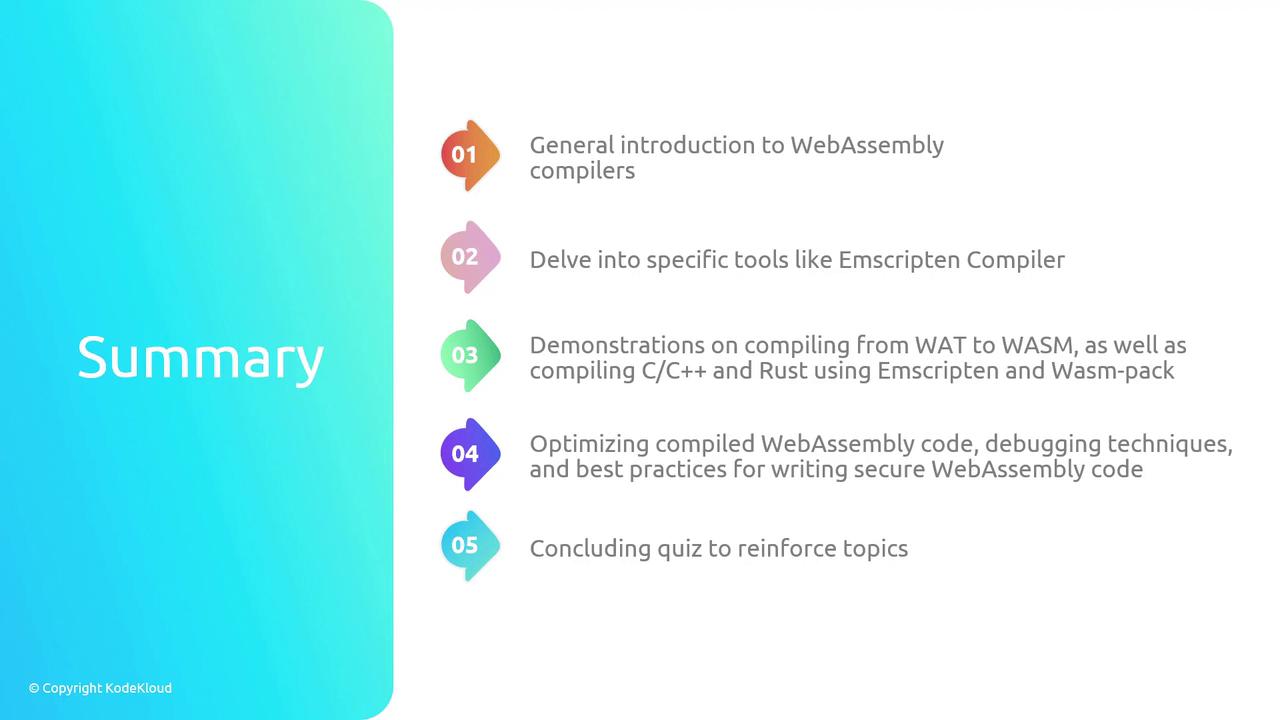Exploring WebAssembly (WASM)
Compiling to WebAssembly
Section Summary
In this lesson, you’ll explore the end-to-end process of compiling C/C++ and Rust applications into WebAssembly (WASM). We start with an overview of the major compilers and build tools, then dive into hands-on demos and advanced techniques:
- Overview of the WASM toolchain & compiler internals
- Hands-on C/C++ to WASM with Emscripten
- Building and packaging Rust modules via wasm-pack
- Optimizing WASM output for size and speed
- Debugging strategies for tracing and profiling WASM modules
- Secure coding best practices for sandboxed WebAssembly
Note
Throughout this lesson, focus on both development efficiency and runtime performance to deliver high-quality WebAssembly binaries.

Learning Objectives
By the end of this section, you will be able to:
| Task | Description |
|---|---|
| Compile source code | Translate C/C++ and Rust projects into optimized WASM binaries |
| Use Emscripten | Set up and run Emscripten for browser and Node.js targets |
| Leverage wasm-pack | Build, test, and publish Rust-based WASM packages |
| Analyze performance | Employ profiling tools and code tuning for faster WASM |
| Debug modules | Apply source-map debugging and stack inspection techniques |
| Secure your modules | Implement sandboxing and input validation for safe execution |
Warning
Always audit third-party modules and enforce Content Security Policy (CSP) to mitigate potential WebAssembly security risks.

Watch Video
Watch video content